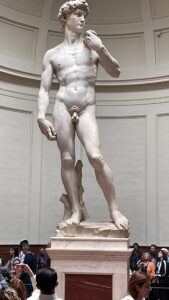Date Night: April 2024

!My Wife treated me to dinner at the La Riv Resturant in Georgetown, Texas.
Everyting about the evening was wonderful. Thanks to Karen.

!My Wife treated me to dinner at the La Riv Resturant in Georgetown, Texas.
Everyting about the evening was wonderful. Thanks to Karen.

Morehouse President, Dr. Robert Franklin, is the tenth President of Morehouse, and follows a long-standing tradition in masterfully guiding and leading the college toward excellence.
Dr. Franklin has highlighted five important “expectations” that all Morehouse Men must meet, but I think we’d all be better off if we could embrace these all-important qualities of leaders.


Michelangelo’s David
Imagine this giant statue, carved by Michelangelo himself way back in the early 1500s. It’s called David, and it’s a total masterpiece of Renaissance art. Standing at a whopping 17 feet tall, it’s the first super-sized marble statue made since ancient times, basically paving the way for all the cool sculptures that came after.
Crazy thing is, David wasn’t always meant to be such a big deal. Originally, he was supposed to be just one of many statues chilling on the roof of the Florence Cathedral. But they ended up putting him in a super important square right in front of the city’s government building. Unveiled in 1504, David quickly became a symbol of Florence’s fight to be its own boss.
To keep the original safe, they eventually moved it indoors to a museum in 1873, but there’s a replica standing in the original spot now.
David’s a pretty popular dude, you see. He’s based on the biblical hero of the same name, who was kind of an underdog himself. So, the statue became a symbol of Florence standing up for its freedoms against anyone trying to push them around, both from other countries and even the powerful Medici family who wanted to rule the city.